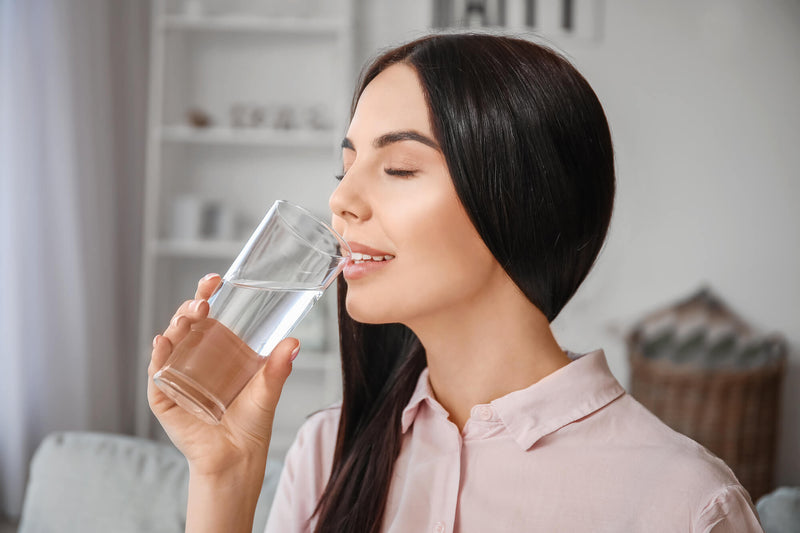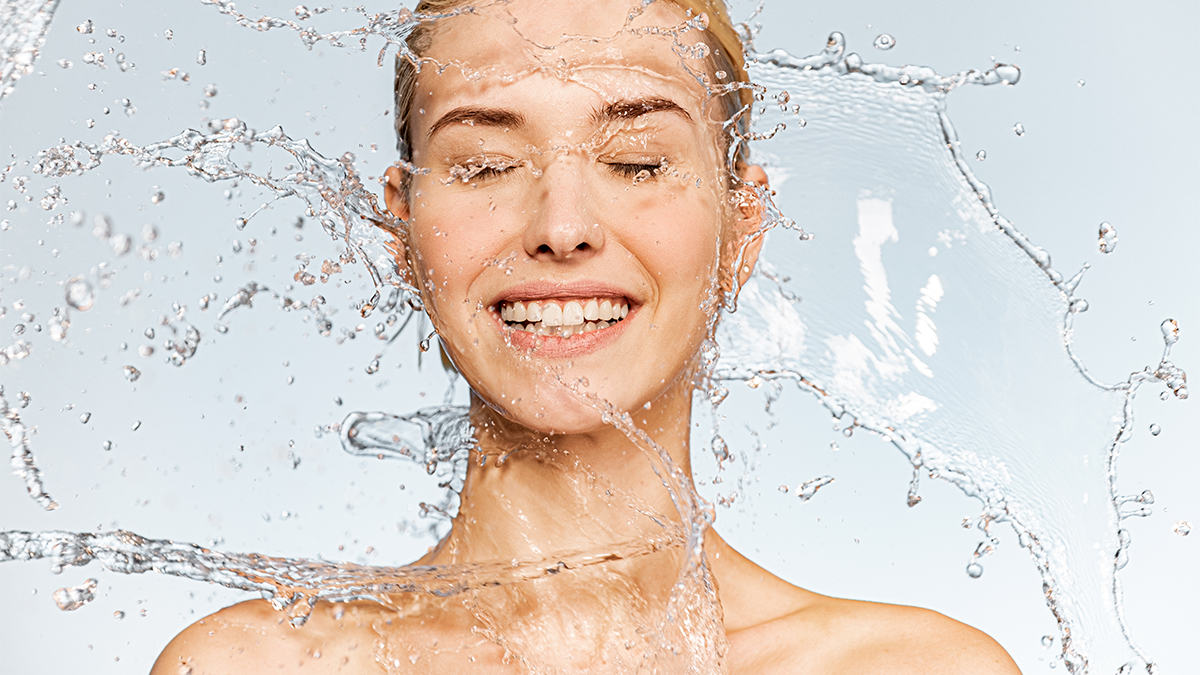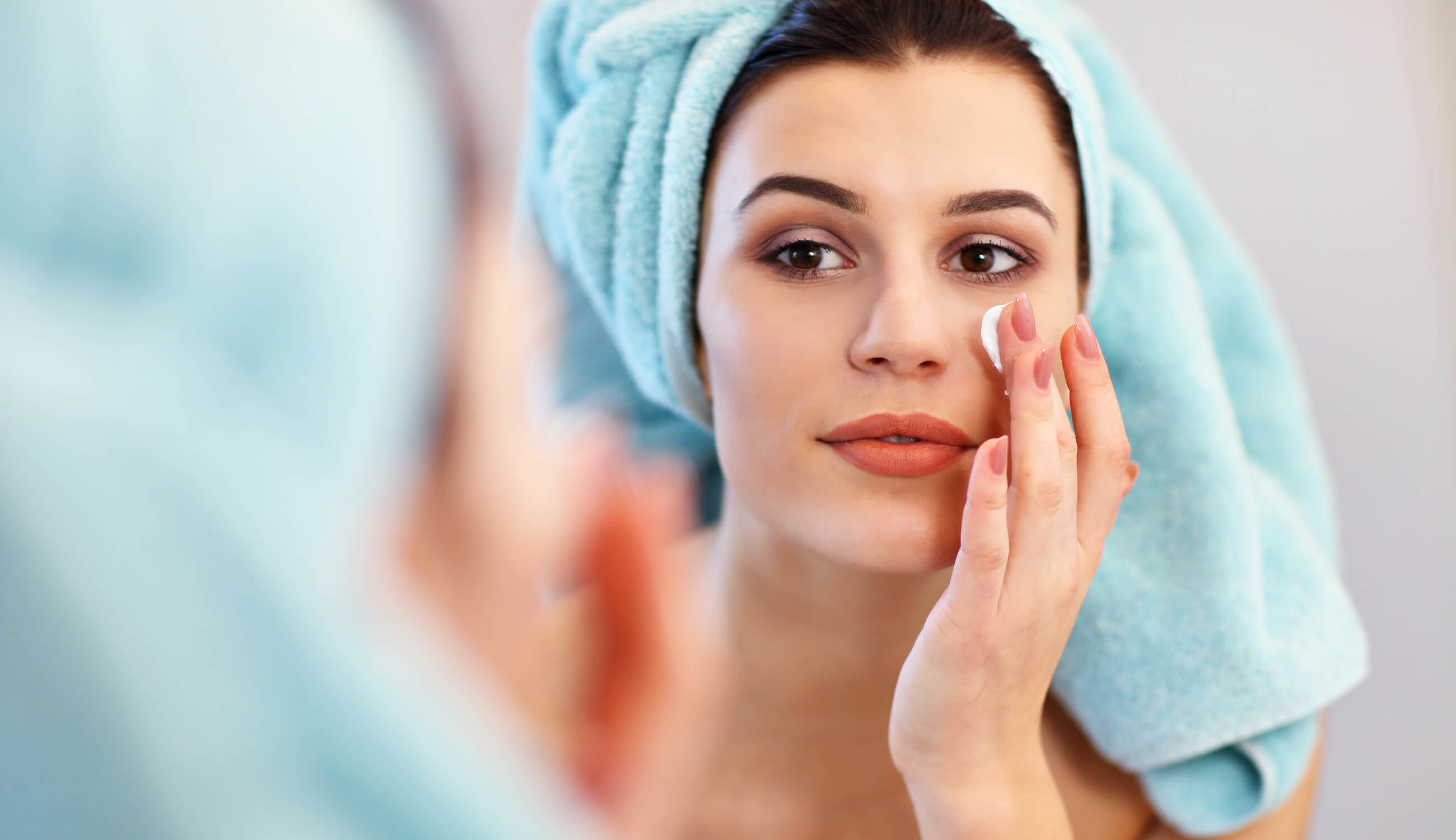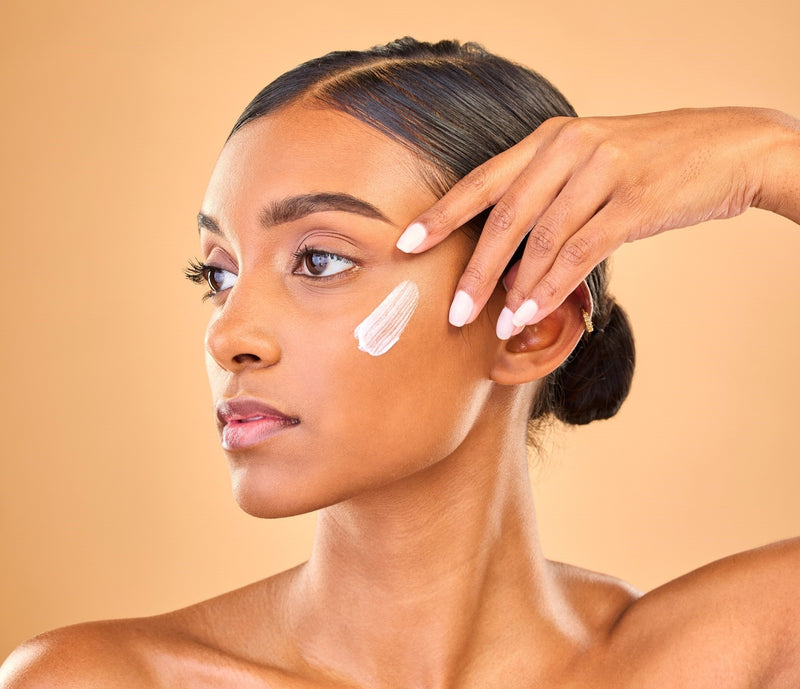Introduction
Keeping your skin hydrated and supple is essential for maintaining its health and appearance. In this guide, we will dive into the world of moisturizing and explore why it is important, how often you should moisturize, and some tips for mastering the art of moisturization.
Why is moisturizing important for skin health?
Moisturizing is crucial for keeping your skin healthy and radiant. When your skin lacks moisture, it can become dry, flaky, and prone to irritation. Moisturizers work by creating a protective barrier on the skin's surface, preventing water loss and locking in hydration.
Additionally, moisturizers contain ingredients that nourish and replenish the skin, such as vitamins, antioxidants, and humectants. These help to improve the overall health and appearance of your skin, reducing the signs of aging, promoting elasticity, and enhancing its natural glow.
How often should you moisturize your skin?
The frequency of moisturizing depends on various factors, including your skin type, environment, and personal preference. Generally, it is recommended to moisturize your skin at least twice a day – once in the morning and once at night. However, if you have dry skin, you may need to moisturize more often, while those with oily skin may prefer a lighter moisturizer or less frequent application.
It is also important to moisturize immediately after cleansing or showering, as this helps to lock in the moisture and prevent dryness. Pay attention to your skin's needs and adjust your moisturizing routine accordingly.
By prioritizing regular moisturization, you can maintain a healthy moisture balance in your skin, improve its texture and tone, and enjoy a smooth and supple complexion.
Now that we understand the importance of moisturizing and how often to do it, let's delve into the essential steps and best practices for achieving moisturizing mastery.

Different skin types and their moisturizing needs
To achieve moisturizing mastery, it is crucial to understand your skin type and its unique moisturizing needs. Here are the different skin types and the best moisturizing practices for each:
Dry Skin: Dry skin lacks natural oils and is prone to flakiness and tightness. If you have dry skin, opt for a rich, creamy moisturizer that provides intense hydration. Look for ingredients like hyaluronic acid, glycerin, and shea butter, which help to moisturize and lock in moisture.
Oily Skin: Oily skin produces excess sebum, making it prone to blemishes and greasiness. Choose oil-free, lightweight moisturizers that are non-comedogenic and won't clog pores. Look for ingredients like salicylic acid and niacinamide, which help to regulate sebum production and control shine.
Combination Skin: Combination skin has both dry and oily areas. For this skin type, a moisturizer that is lightweight and non-greasy is ideal. Consider using different moisturizers for different areas of your face, using a richer formula for dry areas and a lighter formula for oily areas.
Sensitive Skin: Sensitive skin is easily irritated and prone to redness and inflammation. Opt for gentle, fragrance-free moisturizers specifically formulated for sensitive skin. Look for ingredients like ceramides and aloe vera, which help to soothe and calm the skin.
Common skin concerns and how moisturizing can help
Moisturizing plays a crucial role in addressing various skin concerns. Here are some common skin concerns and how moisturizing can help:
Aging Skin: As we age, our skin loses moisture and elasticity, leading to wrinkles and fine lines. Regular moisturizing helps to plump the skin, reduce the appearance of wrinkles, and improve skin firmness and elasticity. Look for moisturizers with anti-aging ingredients like retinol and peptides.
Acne-Prone Skin: Contrary to popular belief, moisturizing is essential for acne-prone skin. Opt for non-comedogenic, oil-free moisturizers that won't clog pores. Moisturizing helps maintain the skin's moisture barrier, preventing dryness and irritation, which can worsen acne.
Uneven Skin Tone: Lack of moisture can exacerbate the appearance of hyperpigmentation and uneven skin tone. Regular moisturizing helps to hydrate the skin, improve its texture, and promote a more even complexion. Look for moisturizers with brightening ingredients like vitamin C and arbutin.
By understanding your skin type and addressing its specific moisturizing needs, as well as utilizing moisturizing to tackle common skin concerns, you can achieve moisturizing mastery and enjoy a hydrated and supple complexion.

Choosing the Right Moisturizer
Factors to consider when selecting a moisturizer for your skin type
One of the most important aspects of moisturizing mastery is choosing the right moisturizer for your specific skin type. Here are some key factors to consider when selecting a moisturizer:
Skin type: As discussed in the previous section, understanding your skin type is vital. Dry skin requires a rich, creamy moisturizer, while oily skin needs an oil-free, lightweight formula. Combination skin benefits from using different moisturizers for different areas, and sensitive skin requires a gentle, fragrance-free option.
Ingredients: Look for moisturizers that contain beneficial ingredients for your skin. For dry skin, ingredients like hyaluronic acid and shea butter provide intense hydration. Oily skin benefits from salicylic acid and niacinamide for oil control. Sensitive skin benefits from soothing ingredients like ceramides and aloe vera.
SPF protection: If you spend time outdoors or want to simplify your skincare routine, consider a moisturizer with built-in SPF protection. This helps protect your skin from harmful UV rays and reduces the need for additional sunscreen.
Allergies or sensitivities: If you have allergies or sensitivities to certain ingredients, make sure to check the product label for potential irritants. Opt for hypoallergenic or dermatologist-tested moisturizers to minimize the risk of adverse reactions.
Types of moisturizers: creams, lotions, serums, and oils
In addition to considering your skin type and specific needs, there are different types of moisturizers to choose from. Here are some common options:
Creams: Creams are thicker in consistency and provide a higher level of hydration, making them ideal for dry and mature skin. They work by forming a protective barrier on the skin, preventing moisture loss.
Lotions: Lotions have a lighter texture and are suitable for normal to combination skin. They provide hydration without feeling heavy or greasy, making them great for everyday use.
Serums: Serums are lightweight and quickly absorbed, making them ideal for oily or acne-prone skin. They deliver a high concentration of active ingredients deep into the skin, targeting specific concerns like fine lines or dark spots.
Oils: Facial oils are a great option for all skin types, including dry, oily, or sensitive skin. They can be used as a standalone moisturizer or mixed with other products for added hydration. Oils seal in moisture and provide nourishment to the skin.
Remember to choose a moisturizer that suits your preferences and skin's needs. Experimenting and finding the right product may take some trial and error, but with patience and persistence, you can achieve moisturizing mastery and enjoy a hydrated and supple complexion.

Establishing a Skincare Routine
Step-by-step guide to properly moisturizing your skin
Proper moisturizing is an essential step in achieving and maintaining healthy, hydrated skin. Here is a step-by-step guide to help you master the art of moisturizing:
Cleanse: Start by cleansing your face with a gentle cleanser to remove any dirt, oil, and makeup. This prepares the skin for better absorption of the moisturizer.
Exfoliate: Exfoliating helps remove dead skin cells and unclog pores, allowing the moisturizer to penetrate deeper into the skin. Use a gentle exfoliator once or twice a week, depending on your skin's needs.
Choose the right moisturizer: Consider your skin type and specific needs when selecting a moisturizer. Dry skin requires a rich, creamy moisturizer, while oily skin benefits from an oil-free, lightweight formula. Combination skin may require different moisturizers for different areas, and sensitive skin needs a gentle, fragrance-free option.
Apply the moisturizer: After cleansing and exfoliating, apply a pea-sized amount of moisturizer to your fingertips. Gently massage the product into your face and neck using upward circular motions. Don't forget to include the delicate skin around your eyes and lips.
Sun protection: If your moisturizer does not contain SPF, it's crucial to apply sunscreen as the final step in your skincare routine. This protects your skin from harmful UV rays and prevents premature aging.
The importance of cleansing and exfoliating before moisturizing
Cleansing and exfoliating before moisturizing plays a vital role in achieving optimal skincare results. Cleansing removes impurities that can hinder the absorption of moisturizer, while exfoliating removes dead skin cells that can interfere with the moisturizer's penetration.
When you cleanse your skin, you remove dirt, excess oil, and makeup, allowing your moisturizer to seep into the skin more effectively. Exfoliating, on the other hand, helps to eliminate dull and rough skin texture, allowing for better absorption of the moisturizer's hydrating ingredients.
By incorporating cleansing and exfoliating into your skincare routine, you create a clean and smooth canvas that maximizes the benefits of your moisturizer. This ensures that your skin receives the hydration it needs to maintain its suppleness and radiance.
By following these steps and understanding the importance of cleansing and exfoliating before moisturizing, you can achieve moisturizing mastery and enjoy a beautifully hydrated and supple complexion. Remember to be consistent with your skincare routine and choose products that suit your skin's unique needs.

Moisturizing Tips for Different Body Parts
Moisturizing the face: dos and don'ts
When it comes to moisturizing the face, there are a few essential dos and don'ts to keep in mind. Firstly, do choose a moisturizer that is suitable for your skin type, whether it's dry, oily, or combination. Additionally, do apply moisturizer to your face and neck using upward circular motions to promote better absorption.
Another important tip is to moisturize your face twice a day - once in the morning and once at night. This helps to keep your skin hydrated throughout the day and replenish moisture lost overnight.
On the other hand, there are a few don'ts to avoid. Don't apply too much moisturizer as it can clog pores and lead to breakouts. It's best to start with a small amount and add more if needed. Also, avoid using harsh exfoliants or cleansers that can strip away natural oils from your skin, as this can cause dryness and irritation.
Keeping your hands and feet hydrated
While we often focus on moisturizing our face, it's equally important to keep our hands and feet hydrated. These areas are prone to dryness and can benefit from regular moisturizing.
For the hands, it's good practice to carry a travel-size hand cream in your bag and apply it after washing your hands or whenever they feel dry. Pay attention to moisturizing the areas in between your fingers and the back of your hands.
When it comes to the feet, regular exfoliation is key to keeping them smooth and soft. Use a foot scrub or pumice stone to remove dead skin cells and then apply a thick moisturizer, especially to the heels and soles. For extra hydration, consider wearing moisturizing socks overnight to lock in moisture.
Remember, consistency is key when it comes to moisturizing different body parts. Make it a part of your daily routine to ensure that your skin remains hydrated and supple. By following these tips, you can master the art of moisturizing and enjoy healthy, nourished skin from head to toe.

Natural and DIY Moisturizing Solutions
Benefits of using natural ingredients for moisturizing
When it comes to moisturizing your skin, using natural ingredients can offer several benefits compared to synthetic products. Natural moisturizers are free from harmful chemicals and artificial additives that can potentially irritate the skin. Instead, they are packed with nourishing vitamins, minerals, and antioxidants that can promote healthier skin. Natural moisturizers also tend to be gentler, making them suitable for all skin types, including sensitive skin. Additionally, they are often more environmentally friendly, as they are biodegradable and do not contribute to water pollution.
Simple homemade moisturizer recipes
If you're looking to incorporate natural moisturizers into your skincare routine, here are a few simple and effective DIY recipes to try:
- Shea Butter and Coconut Oil Moisturizer:
- 1/4 cup shea butter
- 2 tablespoons coconut oil
- 5-10 drops of essential oil (optional, for fragrance)
Melt the shea butter and coconut oil together in a double boiler. Let it cool slightly, then add the essential oil if desired. Transfer the mixture to a clean jar and let it solidify. Apply a small amount to your skin and massage until absorbed.
- Aloe Vera Gel and Jojoba Oil Moisturizer:
- 1/4 cup aloe vera gel
- 2 tablespoons jojoba oil
- 5-10 drops of lavender essential oil (optional, for soothing effect)
Mix all the ingredients together until well blended. Transfer the mixture to a clean container and apply as needed. Aloe vera gel helps to hydrate and soothe the skin, while jojoba oil provides moisturization without clogging pores.
- Honey and Yogurt Hydrating Mask:
- 2 tablespoons organic honey
- 1 tablespoon plain yogurt
Mix the honey and yogurt together until smooth. Apply a thin layer to clean skin and leave it on for 15-20 minutes. Rinse off with warm water and pat dry. Honey is a natural humectant, meaning it helps to attract and retain moisture in the skin. Yogurt contains lactic acid, which gently exfoliates and brightens the skin.
Remember, when using homemade moisturizers, it's essential to do a patch test on a small area of your skin to check for any allergic reactions. Store your homemade products in a cool, dry place and use them within a few weeks for optimal freshness and effectiveness.
By incorporating natural and DIY moisturizing solutions into your skincare routine, you can promote healthy, nourished skin without the use of harsh chemicals. Experiment with different ingredients and recipes to find what works best for your unique skin needs. So go ahead, pamper yourself with nature's goodness and enjoy the benefits of gorgeous, hydrated skin.

Lifestyle Habits for Healthy, Hydrated Skin
Hydration from within: the role of water and a balanced diet
Maintaining hydrated, supple skin goes beyond just applying moisturizers topically. It starts from within, and one key component of healthy skin is proper hydration. Drinking an adequate amount of water throughout the day is crucial for maintaining the skin's moisture levels. Water helps to flush out toxins from the body and keeps the skin cells hydrated, resulting in a glowing complexion.
Additionally, following a balanced diet can also contribute to healthy, hydrated skin. Foods rich in omega-3 fatty acids, such as salmon and walnuts, help to nourish the skin and improve its elasticity. Incorporating fruits and vegetables into your meals provides essential vitamins and antioxidants that promote skin health. Consuming foods high in antioxidants, like berries and green tea, can protect the skin from damage caused by free radicals and environmental stressors.
Avoiding skin-damaging habits like smoking and excessive sun exposure
Certain lifestyle habits can have a detrimental effect on the health and hydration of your skin. Smoking, for example, leads to the production of free radicals that accelerate the aging process and contribute to dry and dull skin. Quitting smoking not only improves your overall health but also enhances the appearance and hydration of your skin.
Excessive sun exposure is another habit to avoid if you want to maintain hydrated skin. UV rays from the sun can cause damage to the skin's protective barrier, leading to moisture loss and dryness. Always protect your skin by applying sunscreen with at least SPF 30, wearing protective clothing, and seeking shade during peak sun hours. Incorporating these habits into your daily routine can help prevent skin damage and maintain optimal hydration levels.
By prioritizing hydration from within through proper water intake and a balanced diet, as well as avoiding skin-damaging habits like smoking and excessive sun exposure, you can support the health and hydration of your skin. Remember to also incorporate natural and DIY moisturizing solutions, as discussed in the previous section, to enhance your skincare routine. With these lifestyle habits in place, you can achieve healthy, hydrated, and glowing skin.

Dealing with Common Moisturizing Challenges
Moisturizing for acne-prone skin
Moisturizing acne-prone skin can be a tricky task. On one hand, you want to keep your skin adequately hydrated, but on the other hand, you don't want to clog your pores or exacerbate breakouts. The key is to find the right moisturizer for your skin type and choose formulas that are non-comedogenic and oil-free. Look for moisturizers that contain ingredients such as hyaluronic acid, which helps to hydrate the skin without adding excess oil. Additionally, incorporating products with salicylic acid or tea tree oil can help to control acne-causing bacteria and reduce inflammation. Remember to cleanse your face thoroughly before applying moisturizer and to use gentle, non-abrasive products to avoid further irritation.
Managing dry skin conditions like eczema and psoriasis
If you suffer from dry skin conditions such as eczema or psoriasis, moisturizing becomes even more important. These conditions can cause intense itching, redness, and flakiness, so it's crucial to keep the skin hydrated to minimize discomfort and prevent further damage. Look for moisturizers specifically formulated for sensitive skin and those that are fragrance-free and hypoallergenic. Ingredients like ceramides, glycerin, and shea butter can help to restore and lock in moisture, providing relief for dry, irritated skin. Applying moisturizer immediately after showering or bathing, while the skin is still damp, can also help to seal in moisture and enhance hydration.
Remember, everyone's skin is unique, so it may take some trial and error to find the right moisturizing routine for your specific needs. Don't be afraid to consult with a dermatologist if you're struggling with persistent skin issues. They can provide personalized recommendations and guidance to help you achieve and maintain hydrated, supple skin. By understanding your skin type, using the right products, and practicing consistent moisturizing habits, you can conquer common moisturizing challenges and enjoy healthy, glowing skin all year round.

Conclusion
In conclusion, mastering the art of moisturizing is essential for keeping your skin hydrated, glowing, and healthy. By understanding the importance of moisturizing for maintaining youthful and supple skin, as well as implementing the right techniques and products, you can achieve the skin of your dreams.
The Importance of Moisturizing for Maintaining Youthful and Supple Skin
Moisturizing plays a crucial role in maintaining the health and appearance of your skin. It helps to replenish lost moisture, improve the skin's barrier function, and protect against environmental stressors. By moisturizing regularly, you can prevent dryness, flakiness, and dullness, while promoting a more youthful and supple complexion. Moreover, moisturizing can also help to reduce the appearance of fine lines and wrinkles, giving your skin a smoother and more radiant look.
Final Tips for Achieving Moisturizing Mastery
To achieve moisturizing mastery and ensure your skin stays hydrated and supple, here are some final tips to keep in mind:
Know your skin type: Understanding your skin's needs and characteristics will help you choose the right moisturizer and avoid any potential irritants. Whether you have oily, dry, combination, or sensitive skin, there are tailored moisturizers available for your specific needs.
Choose the right product: Look for moisturizers that are formulated with hydrating ingredients such as hyaluronic acid, ceramides, and glycerin. These ingredients help to attract and retain moisture in the skin, keeping it hydrated throughout the day.
Practice proper application: Apply moisturizer to clean, damp skin after cleansing. This helps to lock in moisture and maximize absorption. Gently massage the moisturizer in upward motions to promote circulation and enhance its effectiveness.
Protect your skin: In addition to moisturizing, it's important to protect your skin from harmful UV rays. Use a broad-spectrum sunscreen with at least SPF 30 daily, even on cloudy days.
Stay consistent: Consistency is key when it comes to moisturizing. Make it a part of your daily skincare routine and apply moisturizer twice a day, in the morning and evening.
By following these tips and making moisturizing a priority, you can attain moisturizing mastery and enjoy hydrated, supple, and radiant skin all year round. So go ahead, embrace the power of hydration, and let your skin glow with confidence.


Post a Comment